As we rapidly approach winter, homeowners and renters may start to feel colder in various areas of their residences. There are typically multiple causal factors for homes to become colder and less energy efficient, but there is a base cause that drives the rest of the sources – stack effect.
Stack effect is a result of higher temperature air in a structure rising and creating a pressure differential that draws cold air into a structure. The more the structure has the ability for this air to rise and the larger the openings on the exterior, the more cold exterior air can be drawn into the structure.
Air can enter via numerous sources that include cracks and openings in caulk joints, gaps in seals on windows, poor or improper weatherstripping, and other unsealed openings on the exterior.
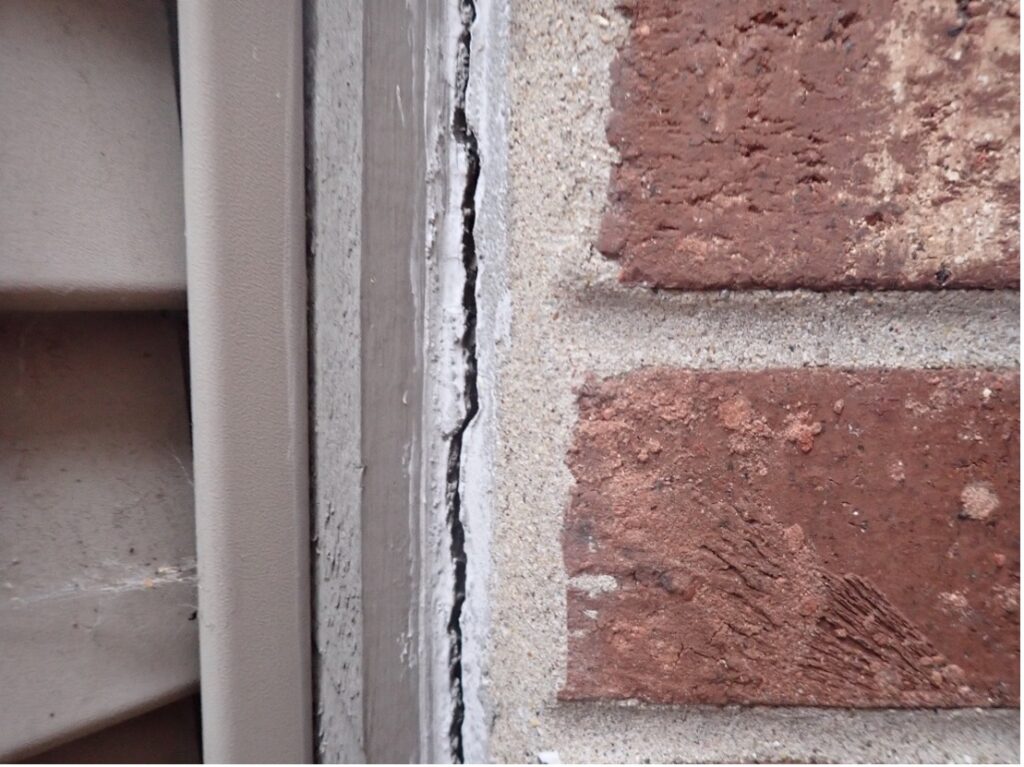
Open Crack in Caulk Joint
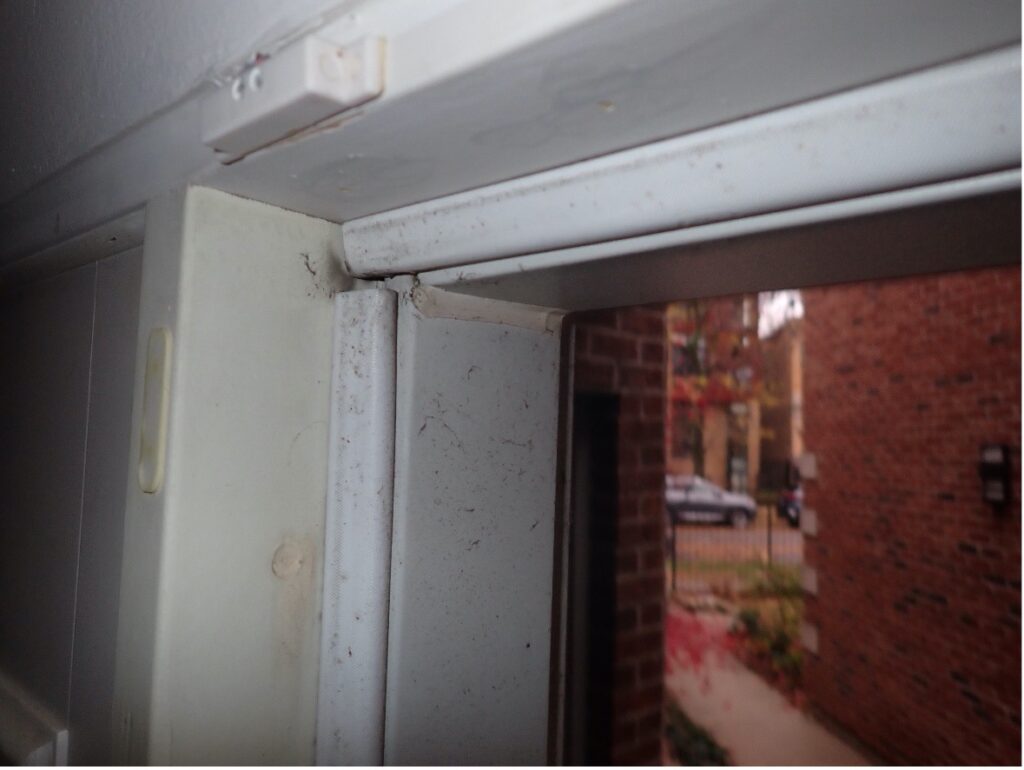
Open Gap in Weatherstripping
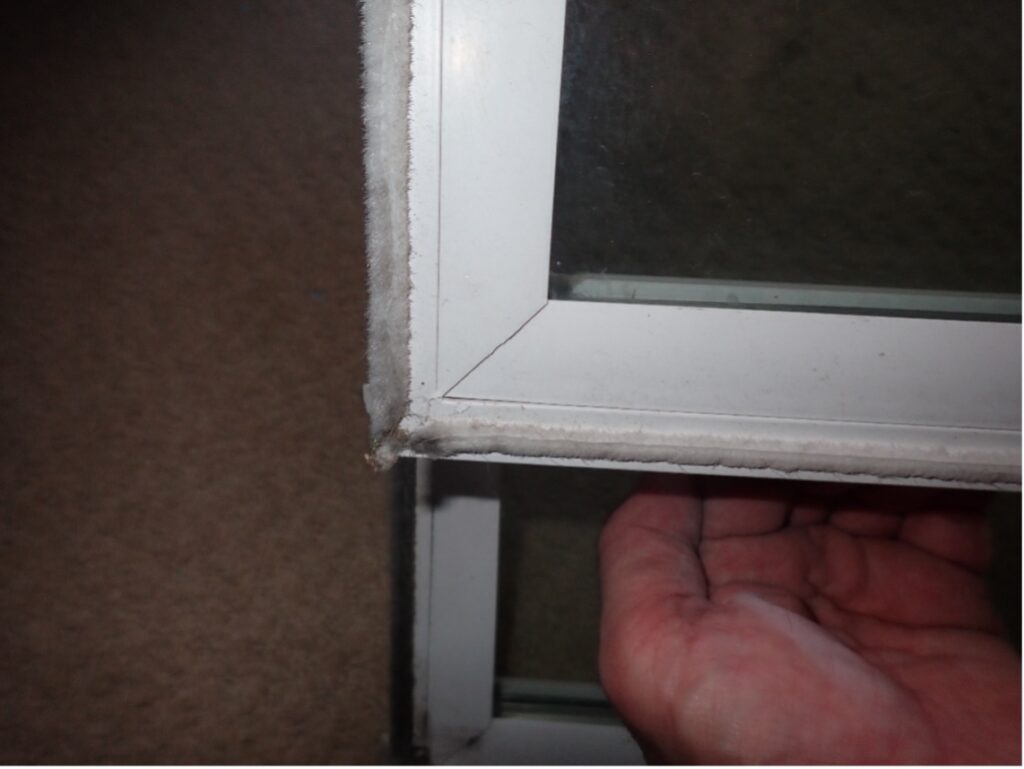
Open Gap in Corner Window Seal
Air can rise in the structure through unsealed openings in basement ceilings and unsealed areas in the attic that allow air from the basement to migrate into the attic. Not only will this result in a stack effect that can create discomfort in the home, it has the potential to cause warmer temperatures in the attic that can result in the formation of condensation.
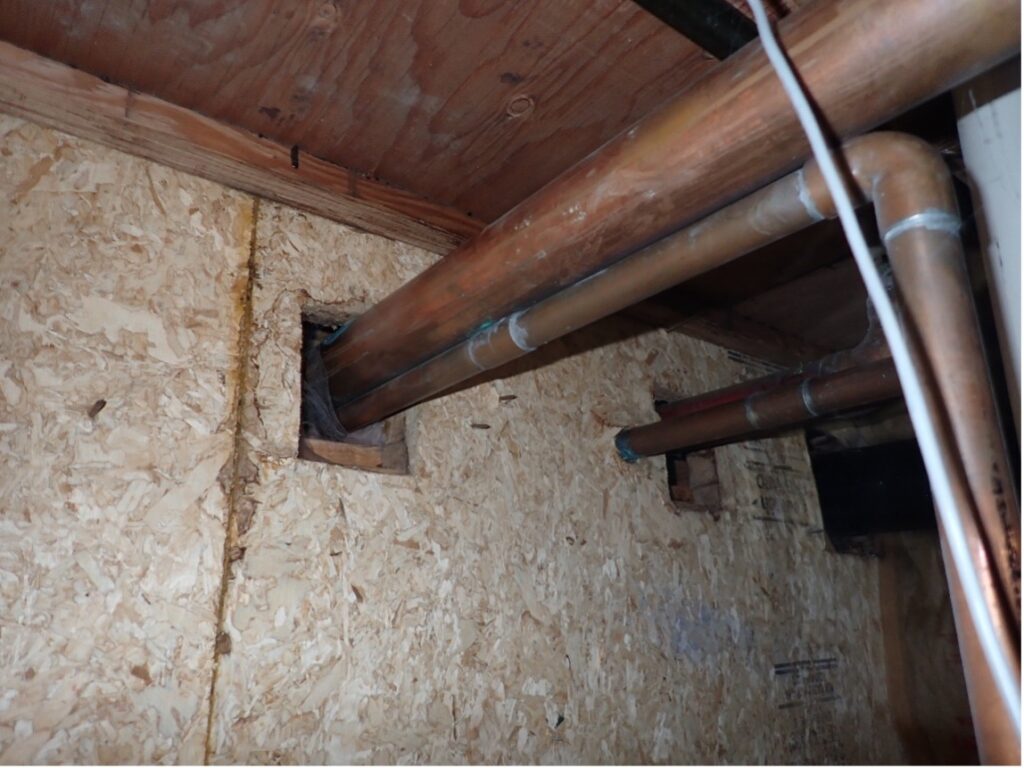
Unsealed Openings in Basement Ceilings

Unsealed Openings in Attic Floor
In order to reduce the stack effect in the home it is essential that all areas of the home be air sealed. The US department of Energy has an excellent webpage that discusses air sealing and it can be found at this link: https://www.energy.gov/energysaver/air-sealing-your-home
According to their webpage, here are some of the tips for air sealing:
- Hire an energy assessor or other weatherization expert to test your home for air tightness.
- Caulk and weatherstrip doors and windows that leak air.
- Caulk and seal air leaks where plumbing, ducting, or electrical wiring comes through walls, floors, ceilings, and soffits over cabinets.
- Install foam gaskets behind outlet and switch plates on walls.
- Inspect dirty spots on any visual insulation for air leaks and mold. Seal leaks with low-expansion spray foam made for this purpose and install house flashing if needed.
- Look for dirty spots on your ceiling paint and carpet, which may indicate air leaks at interior wall/ceiling joints and wall/floor joists, and caulk them.
- Replace single-pane windows with more efficient double-pane low- emissivity windows. See the Windows section for more information.
- Use foam sealant on larger gaps around windows, baseboards, and other places where air may leak out.
- Check your dryer vent to be sure it is not blocked. This will save energy and may prevent a fire.
- Replace exterior door bottoms and thresholds with ones that have pliable sealing gaskets.
- Keep the fireplace flue damper tightly closed when not in use.
- Seal air leaks around fireplace chimneys, furnaces, and gas-fired water heater vents with fire-resistant materials such as sheet metal or sheetrock and furnace cement caulk.
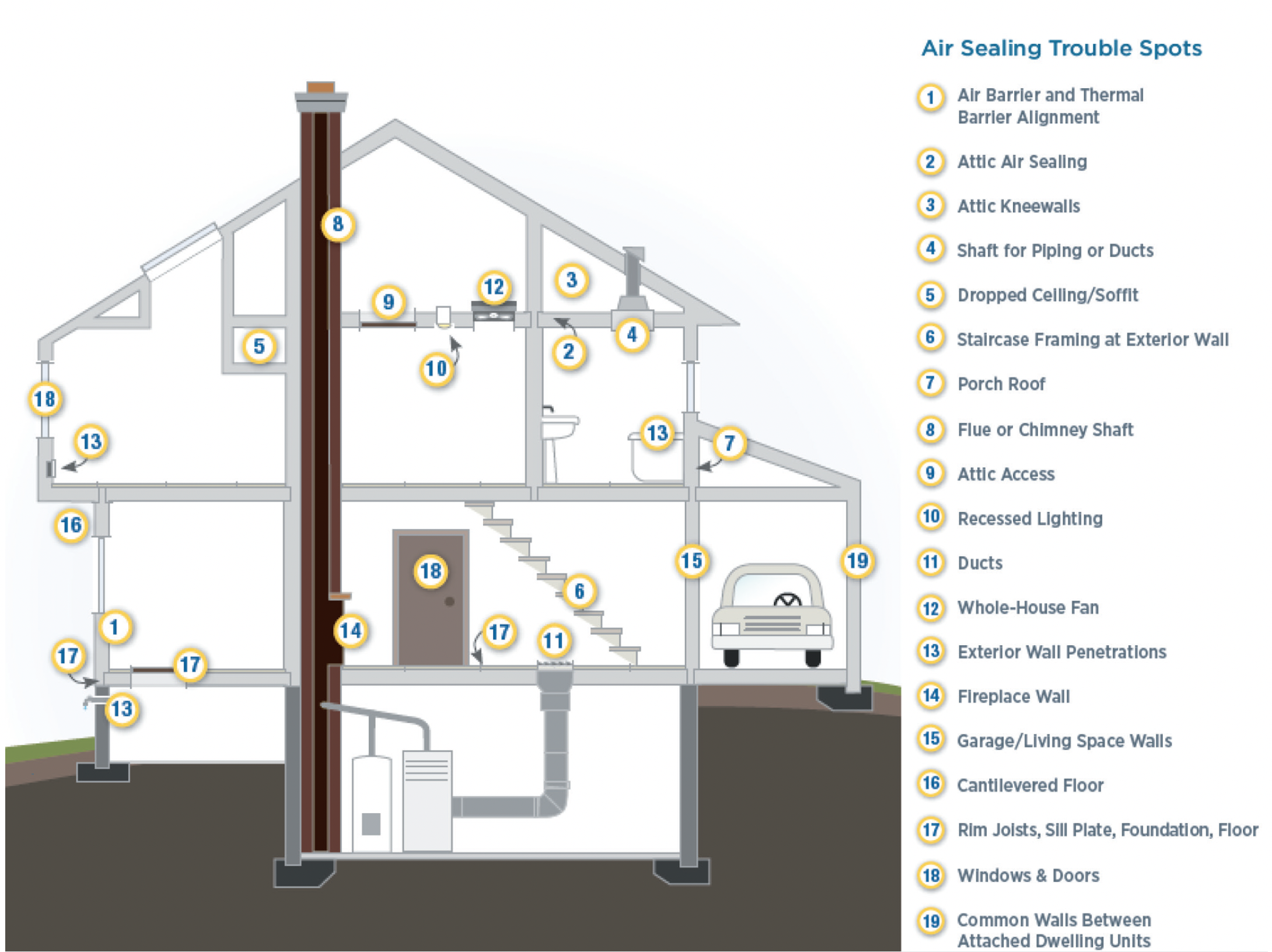
Air Sealing Recommendations
An additional source of air leakage that can exacerbate the stack effect in a home and can also significantly increase inefficiencies in the home are fireplaces. The dampers on the flue for a typical fireplace do not seal well and are a source of air leakage. Also, the chimney connected to the fireplace allows cold air to flow downwards into the home and creates a colder area in the home.
While you can install insulating devices in the flue near the damper, significant energy savings can be realized by installing a top damper on the chimney. This insulated cap keeps the cold air from entering the chimney and can reduce heating costs up to 30% in a typical home.
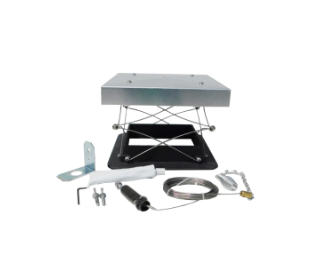
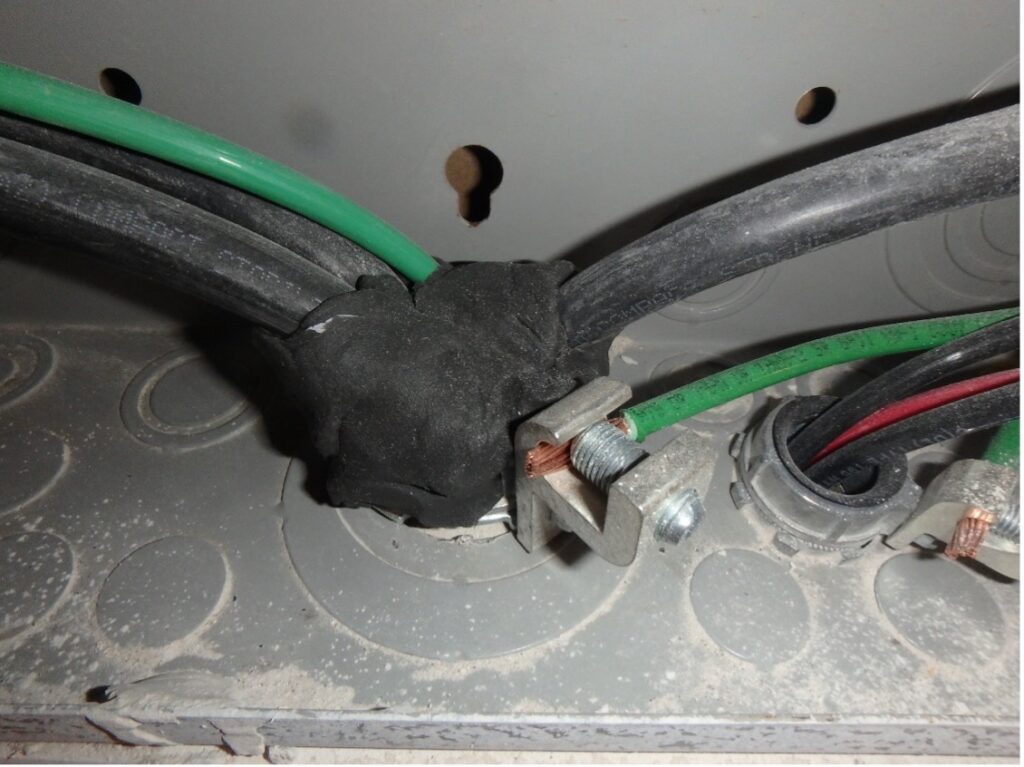
Putty Sealing Feeder Conduit
Finally, one hidden source of air leakage that is commonly missed is the feeder conduit on the electric service panel in the home. The service panel is usually located in the basement and in most cases is connected to the exterior of the home via a conduit that contains the incoming electric service wires. This conduit is typically unsealed and allows cold air to enter the panel and condense on the interior and is also a significant contributor to the stack effect that may be occurring in the home. Sealing this conduit is fairly easy and involves using putty or some other flexible sealant.
Additional improvements in comfort in the home can be realized by improvements in the HVAC system, however, the first place to start would be to closely evaluate deteriorated and/or leaky elements in the home that can result in a stack effect.
